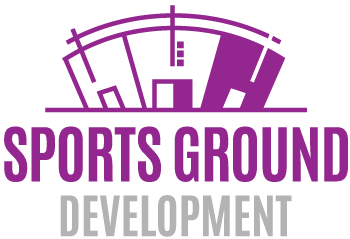Urban areas are constantly evolving, with the development of sports grounds becoming increasingly significant due to the burgeoning demand for recreational spaces. However, this development brings with it the challenge of noise pollution—a persistent bane for urban dwellers.
Recognising and mitigating the din and clamour associated with such spaces is not just considerate but essential to preserve the quality of urban life. This blog delves into the multifaceted issue of noise pollution in the context of urban sports ground development and explores strategies for its management.
Noise pollution often emerges as an unintended consequence of urban sports grounds, with the jubilant roars of spectators and the operational sounds of sports facilities piercing through the urban soundscape.
Acknowledging this at the outset allows developers and city planners to proactively address the concerns, ensuring that the health and tranquillity of local communities are not sidelined in the quest for vibrant sports venues.
Understanding Noise Pollution
Noise pollution refers to harmful or annoying levels of noise. In the setting of an urban sports ground, this could stem from a plethora of sources including the clamour of the crowd, the public address systems, and even the thud of sports equipment.
Understanding these various contributors is the first step towards developing solutions that can help maintain the acoustic balance in urban areas.
The implications of this persistent din go beyond mere irritation.
The cacophony generated by sports grounds can disrupt the daily lives of residents, intruding into the sanctity of their homes and contributing to a form of sensory pollution that is often taken for granted.
With the right knowledge, stakeholders can move beyond recognition to effective action, mitigating the discord and crafting more harmonious urban spaces.
The Impact of Noise on Urban Communities
When the thrill of the game leads to relentless noise, it can have profound effects on the physical health of nearby residents.
The relentless bombardment of sound can lead to hearing loss and interrupt natural rhythms, such as sleep patterns, thereby having a direct impact on the well-being of individuals.
It’s a domino effect where the initial impact on hearing and sleep can spiral into a wider set of health issues, ranging from hypertension to heart disease.
Mental well-being is also at stake, with studies drawing a link between prolonged exposure to noise and increased levels of stress.
The constant background noise of a nearby sports ground can erode the sense of peace within the community, leading to decreased productivity and a general decline in quality of life.
These intangible costs are seldom accounted for, yet their impact on urban communities is significant and far-reaching.
Noise Mitigation Strategies for Urban Sports Grounds
Designing sports grounds to minimise noise involves strategic planning from the ground up. Orienting fields away from residential areas, incorporating sound-absorbing materials within the structure, and installing barriers that reflect or absorb sound can all play a role in diminishing the auditory impact.
Moreover, by harnessing technology to regularly monitor noise levels, sports ground operators can remain within acceptable auditory limits, ensuring that both the spirit of sport and community tranquillity are upheld.
Innovation stands at the forefront of this battle against noise pollution. Developers are experimenting with advanced materials that can dampen noise and employ architectural designs that contain and control sound waves.
Moreover, the incorporation of green spaces and buffer zones can serve not just as aesthetic elements but also as natural barriers that absorb sound, promoting a quieter and more serene environment.
Case Studies
There are exemplars in urban design that have effectively managed the noise produced by sports grounds.
For instance, stadiums in some metropolises have been commended for their innovative use of sound-deflecting structures and strategic placement, which ensure minimal disruption to the surrounding community.
These success stories provide a blueprint that others could emulate, reinforcing the notion that consideration for noise pollution should be integral to sports ground design.
On the flip side, there are cautionary tales that underscore the consequences of neglecting noise management.
Venues that have become notorious for their disruptive noise levels often face pushback from the community, which can manifest in attendance dips or protracted legal challenges.
The lessons from these experiences are clear: foresight and planning are essential in creating urban sports grounds that harmonise with their environment and their neighbours.
Conclusion
In the bustling heart of our cities, the creation of urban sports grounds should not come at the cost of community peace.
Recognising the impact of noise pollution and taking steps to mitigate it is not just about regulatory compliance; it’s about enhancing the quality of urban living.
By prioritising sound management, developers can ensure that sports grounds contribute positively to the urban fabric, providing spaces for recreation and community building while respecting the auditory comfort of city dwellers.
It’s a delicate balance, but with careful planning and innovative design, it’s certainly within reach.
If you are interested in a new sports ground, get in touch with us today for more information.

